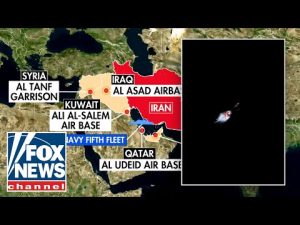The recent developments involving Iran and their attempted missile attack serve as a stark reminder of the ongoing tensions in the Middle East. Despite all the wailing and gnashing of teeth about “escalation,” what transpired was not a formidable counterstrike but rather a symbolic gesture that showcased Iran’s weak posture on the global stage. It’s almost amusing how predictable this situation has become; when cornered, Iran resorts to flashy displays that quickly fizzle out.
Initially, the day kicked off with the United States State Department urging Americans in Qatar to shelter in place, signaling an impending threat from Iran. Such warnings typically induce panic, but the reality was far less dramatic. When the missiles were launched, their interception by Qatari defenses revealed a critical point: these attacks were never genuinely intended to escalate further. The Iranian leadership, particularly under the watchful eyes of U.S. military preparedness, understood that any aggressive move could quickly lead to their downfall. Their Supreme Leader’s bark was all that was left, a frail attempt to maintain the facade of power.
The timeline of events was illustrative. When the missiles struck, they were intercepted, and crucially, there were no casualties reported. This should have been a cue for analysts to step back and recognize that Iran’s leadership had coordinated their response closely, fearful of provoking a decisive retaliation that could threaten their regime. It wasn’t just a lack of ambition; it was an acknowledgment of their vulnerabilities. The notion that they would risk their very existence for a mere point of pride is a gamble they were unwilling to take.
As illustrated by oil market reactions, the world understands the limitations of Iran’s ability to project force. When crude oil prices barely stirred in response to these so-called attacks, it was evident that traders viewed the situation with skepticism. They have seen Iran’s theatrics all too often; saber-rattling without substance is not a new tactic for the Islamic Republic. While pricing spiked temporarily, it quickly fell back. Investors aren’t buying the narrative that Iran is on the verge of unleashing a full-scale war when it can’t even target a base effectively.
The humor in this situation lies in the stark contrasts drawn between Iran’s bluster and the cold reality of its condition. The fact that the Ayatollah had to rely on sending mere ten missiles, all of which were intercepted, shows just how far the Iranian leadership has regressed in terms of influence and credibility. It’s reminiscent of a cartoon villain whose plans are continuously thwarted by their own incompetence. Meanwhile, the United States and its allies have clearly demonstrated their resolve, ensuring that Iran will think twice about any further hostile actions.
In summary, the recent missile launch by Iran was not the grand revenge they purported it to be; it was a calculated maneuver lacking in genuine intent. The posture they took was designed more for domestic optics than as a serious act of aggression. The U.S. remains vigilant, ready to maintain peace while keeping the Iranian regime in check. The world watches, chuckling at the farcical display of retaliations that are as ineffective as they are desperate, waiting for Iran to come to terms with its reality: it can bluster, but it can’t back it up.







